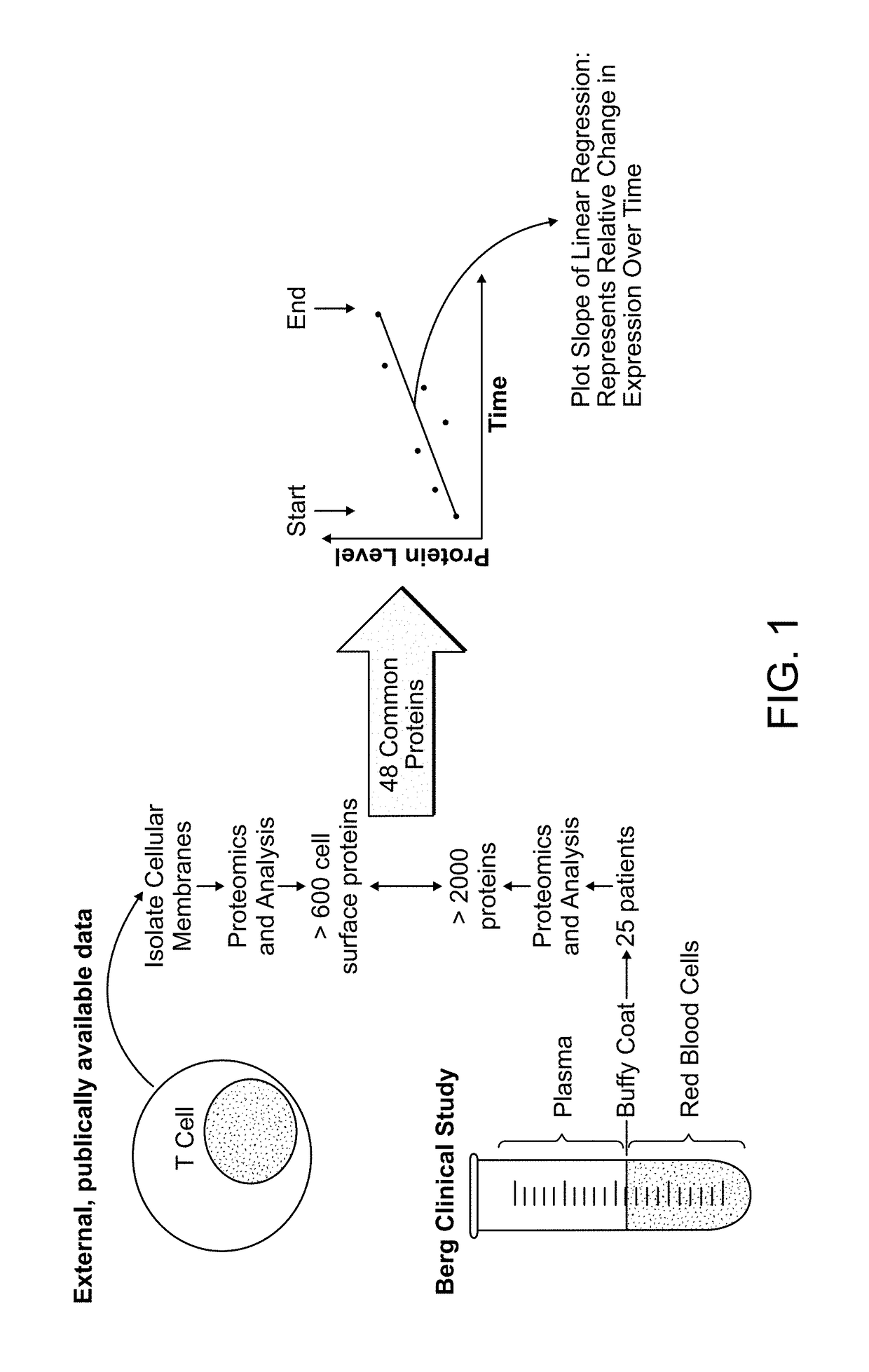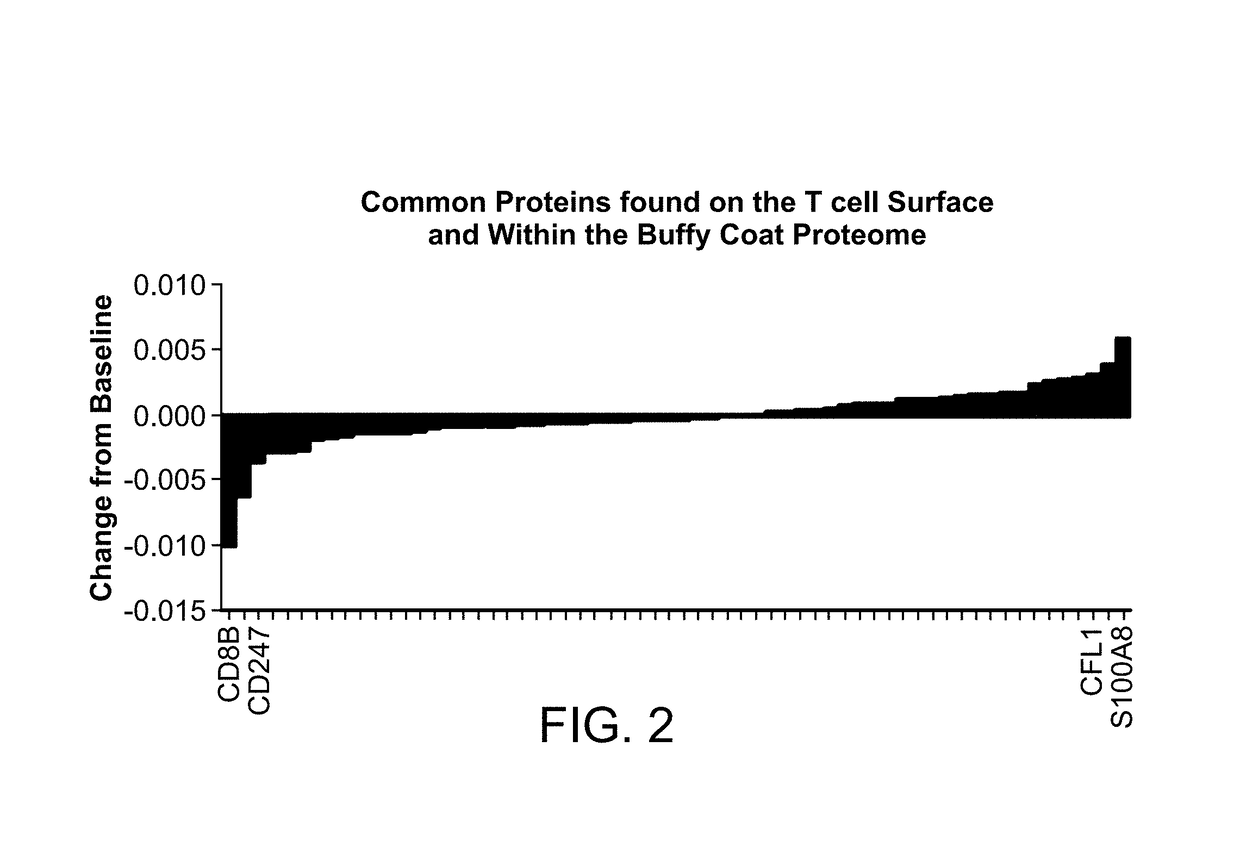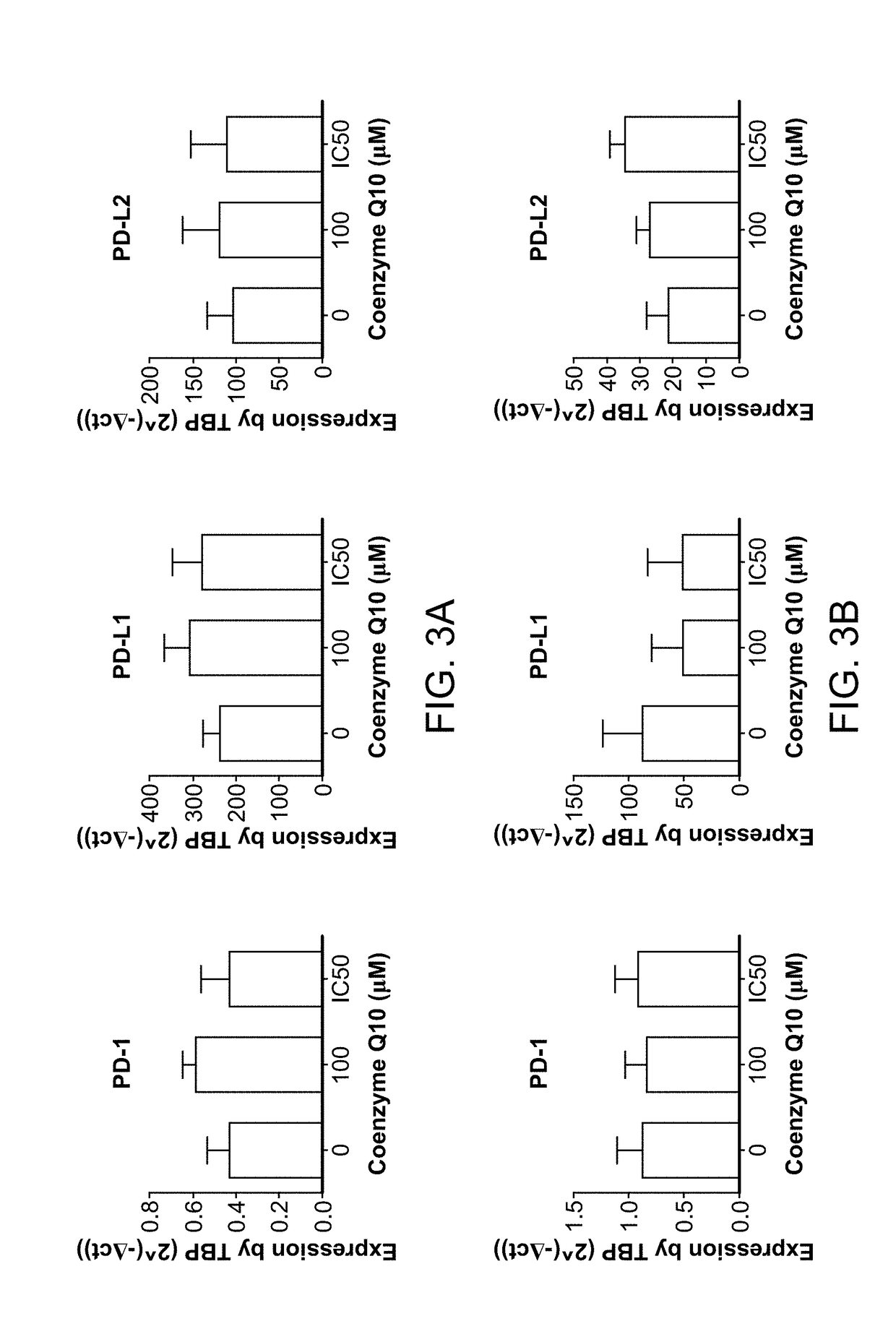Methods for the treatment of cancer using coenzyme q10 in combination with immune checkpoint modulators
a technology of coenzyme q10 and immune checkpoint, which is applied in the field of cancer treatment, can solve the problems of cancer patients suffering from cancer, organ failure, chronic or acute pain, and many serious side effects of chemotherapeutic agents used in cancer treatment, and achieves the effects of reducing tumor burden, improving treatment response, and reducing tumor siz
- Summary
- Abstract
- Description
- Claims
- Application Information
AI Technical Summary
Benefits of technology
Problems solved by technology
Method used
Image
Examples
example 1
n of T Cell Surface Proteins in Cancer Patients Treated with Coenzyme Q10
[0258]The ability of Coenzyme Q10 to modulate immune function in cancer patients was investigated by characterizing the molecular signature in buffy coats of patients administered Coenzyme Q10 for the treatment of solid tumors. A sterile Coenzyme Q10 (Ubidecarenone, USP) nanosuspension was administered intravenously to patients with solid tumors. Coenzyme Q10 was evaluated both as a monotherapy and in combination with standard chemotherapeutic agents (e.g. gemcitabine, 5-fluorouracil and docetaxel). The Coenzyme Q10 was provided as a 4% coenzyme Q10 nanosuspension formulation as described in WO 2011 / 112900, the entire contents of which are expressly incorporated herein by reference.
[0259]The effect of Coenzyme Q10 treatments on protein expression in immune cells within the buffy coat was evaluated. Furthermore, it was determined whether the proteins identified were known to be on the surface of T cells. To comp...
example 2
Coenzyme Q10 on PD1, PD-L1 and PD-L2 Expression in Human Cancer Cell Lines
[0270]Levels of mRNA expression of the immune checkpoints PD1, PD-L1 and PD-L2 were determined in human breast (MDA-MB231), prostate (LnCAP), ovarian (SKOV-3), colon (HT29), lung (A549), liver (Huh-7), and pancreatic (MIA PaCa-2) cancer cells treated with 50 μM Coenzyme Q10, 100 μM Coenzyme Q10, or the IC50 of Coenzyme Q10 for each cell line. There was a significant increase in PD-L1 mRNA expression in colon cancer cells treated with 50 μM Coenzyme Q10 relative to the untreated cells (*p<0.05; n=3). There were no significant differences among the other treatment groups. See FIGS. 3A-3G. PD1 expression was near the limit of detection of the assay (Ct values of approximately 35), indicating that PD1 is not highly expressed in any of the human cancer cell lines evaluated.
[0271]Flow cytometry analysis with a fluorescent probe for PD-L1 was used to determine the expression of PD-L1 protein on the surface of various...
example 3
Studies of the Effect of Coenzyme Q10 on Proliferation, Metabolism and PD-L1 Expression in Murine Cancer Cell Lines
[0274]Previous in vitro and in vivo studies of the effect of Coenzyme Q10 on cancer have been performed on human cancer cells. In higher mammals, such as humans, which have longer life-spans and slower metabolisms, Coenzyme Q10 is the predominant form of Coenzyme Q (Lass A. et al., 1997, J Biol Chem. 272(31):19199-204.). However, in lower mammals with relatively short life-spans and fast metabolism, the predominant form is Coenzyme Q9. Because Coenzyme Q10 is being evaluated in human patients for treatment of cancer, in vitro experiments will be performed to determine whether Coenzyme Q10 has any effect on the cell metabolism of murine cell lines. The in vitro assays will be focused to determine the EC50 of Coenzyme Q10 in the murine cancer cell lines and to determine Oxygen Consumption Rate (OCR) and Extracellular Acidification Rate (ECAR) on the murine cancer cell lin...
PUM
| Property | Measurement | Unit |
|---|---|---|
| volume | aaaaa | aaaaa |
| size | aaaaa | aaaaa |
| time | aaaaa | aaaaa |
Abstract
Description
Claims
Application Information
 Login to View More
Login to View More - R&D
- Intellectual Property
- Life Sciences
- Materials
- Tech Scout
- Unparalleled Data Quality
- Higher Quality Content
- 60% Fewer Hallucinations
Browse by: Latest US Patents, China's latest patents, Technical Efficacy Thesaurus, Application Domain, Technology Topic, Popular Technical Reports.
© 2025 PatSnap. All rights reserved.Legal|Privacy policy|Modern Slavery Act Transparency Statement|Sitemap|About US| Contact US: help@patsnap.com



